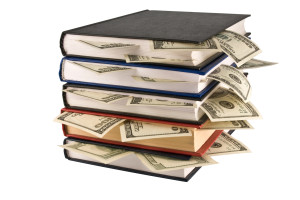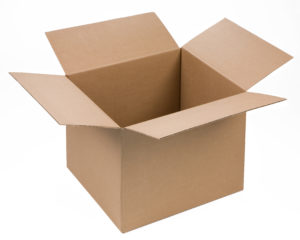Hey guys! It’s been a while since I’ve posted an article, and I wanted to share something that’s allowed my book dealing business to generate a constant cash flow even when I can’t find many books to sell to buyback companies to earn fast extra cash.
The strategies I describe here are especially relevant if you want to make online book dealing a part time (or even full time) business – but “casual” booksellers can benefit from the tips I share as well.
As those of you who have been following my tips to earn extra money by flipping books may have realized, summer is a very busy time for buyback companies since they need to purchase a lot of books to sell to students when the school year begins.
For online book dealers, this is both good and bad. On the plus side, if you can find a lot of untapped thrift stores, library bookstores, and garage sales and buy hundreds of popular books cheaply, you can make a lot of money fast by going to Bookscouter and re-selling those books to buyback companies that offer the best prices for them.
Unfortunately, summer is also the time when finding good books to sell is difficult since a lot of people who don’t normally sell books online (especially college students reselling their textbooks) are using Bookscouter to make extra money from books for their education and vacation funds. This means the pickings at your favorite thrift stores can get sparse as your competition rises.
For those of you who encounter this problem – take heart. Much of this competition is temporary and you’ll soon find you can buy tons of books again to resell to companies like Textbooks.com, Sell Back Your Book, Cash4Books, and Valore for quick cash.
In the meantime though, how can you still make money selling books online during these potentially “lean” times?
The answer lies in doing something very simple throughout the year.
Using Amazon.com to List Your Stockpile Valuable Books
Much like a squirrel stores nuts to prepare for the winter, the smart book dealer doesn’t sell all the books he or she finds for an immediate profit. Instead, he or she lists the really valuable books on Amazon, realizing that sometimes, it makes more sense to wait weeks, months, and yes – even years for the right book to sell for the right profit.
If you read my article Should You Sell Textbooks on Amazon or to a Book Buyback Company to Make Money? you’ll see I provide a detailed explanation for when you should sell your books to a buyback company like Valore, and when it makes much more sense to list your book on Amazon and wait for it to sell for a higher profit.
For now, however, you should realize that keeping a collection of highly profitable books listed on Amazon is the best way to ensure your books continue to make you money even when you can’t find a lot of books to sell to Bookscouter’s buyback companies.
I’ve personally sold several hundred books on Amazon during these “lean times” for several times the profit I would have realized if I’d sold them immediately through Bookscouter. (Most of the books I sell through Amazon give me a nice net profit of $20 – and I’ve sold several books for hundreds of dollars via Amazon that most buyback companies would have only bought for $15).
As an added bonus, packing and shipping one $200 book you sold on Amazon is a lot faster and easier than packing 20 or 30 books to ship to a buyback company (which is something you’ll appreciate when the summer heat picks up!).
To ensure you have this stockpile (and keep profiting from it) please follow these tips:
Make Listing Books on Amazon Part of Your Regular Routine
To ensure you find those valuable books (which I like to think of as rare “diamonds” or “golden nuggets” you find among the “gold dust” books you sell to buyback companies), make sure you get a free Bookscouter account.
This will ensure that you can see what that book is selling for on Amazon as well as to buyback companies (sometimes the price difference can be quite extreme). Be sure to buy these books even if they aren’t selling a lot on Bookscouter (just make sure they’re in at least good condition).
Then when you get ready to check your books on Bookscouter to sell them to buyback companies, make sure to set aside the books that command a high price on Amazon (you may want to double check these prices on the actual Amazon website as prices can fluctuate quickly).
Make sure to list these books on your Amazon Seller Account as quickly as possible. As long as you make this a regular part of your bookselling routine, you’ll soon have a substantial collection of books selling on Amazon for high prices that will keep your cash flow constant.
Check Periodically To See if Any Amazon Books Can Be Sold Through Bookscouter
Since prices can and do go up and down quickly on both Amazon and Bookscouter, you may want to compare the price of your Amazon books against the current bids for that book on Bookscouter.
This will enable you to still profit from your book if it starts to depreciate quickly on Amazon – and gives you another stockpile of books to sell to buyback companies during those lean periods where you can’t find a lot of books to sell through Bookscouter.
Want to receive more tips and tricks for how to sell books online for extra money? Subscribe to my blog!
Do you have a question or suggestion for a future blog article? Email me at sellbooksfastonline@gmail.com.















